Rank Species | Higher classification Dead-nettles | |
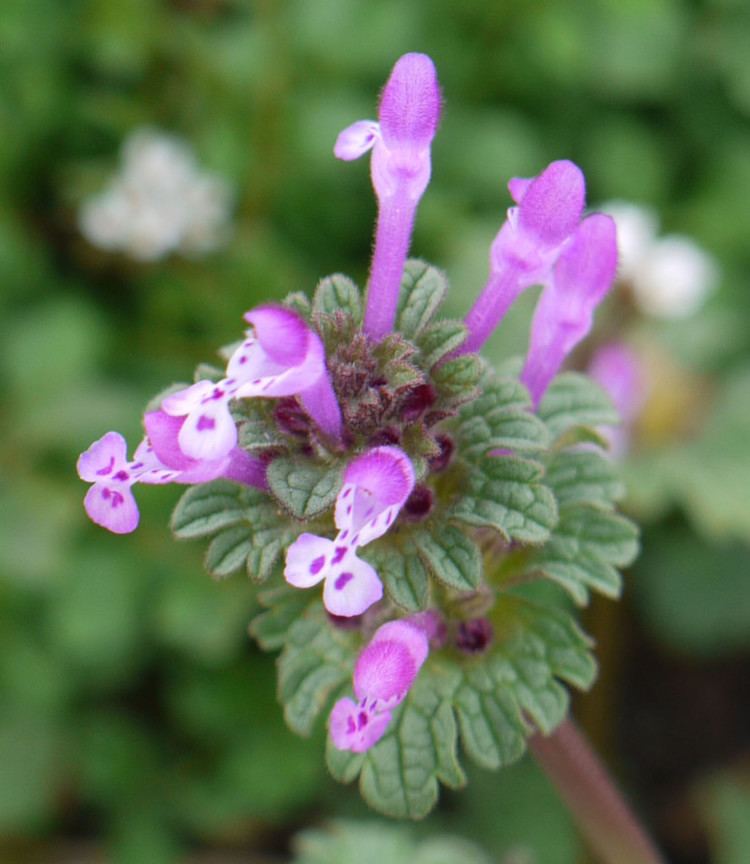 | ||
Similar Purple Deadnettle, Dead‑nettles, Stitchwort, Gnaphalium affine, Common Chickenweed | ||
Plant portrait henbit lamium amplexicaule
Lamium amplexicaule, commonly known as henbit dead-nettle, common henbit, or greater henbit, is a species of Lamium native to Europe, Asia and northern Africa.
Contents
- Plant portrait henbit lamium amplexicaule
- Eattheweeds episode 14 henbit lamium amplexicaule
- Description
- Distribution and habitat
- Uses
- References

It is a low-growing annual plant growing to 10–25 cm (3.9–9.8 in) tall, with soft, finely hairy stems. The leaves are opposite, rounded, 2–3 cm (0.79–1.18 in) diameter, with a lobed margin. The flowers are pink to purple, 1.5–2 cm (0.59–0.79 in) long. The specific name refers to the amplexicaul leaves (leaves grasping the stem).

Eattheweeds episode 14 henbit lamium amplexicaule
Description
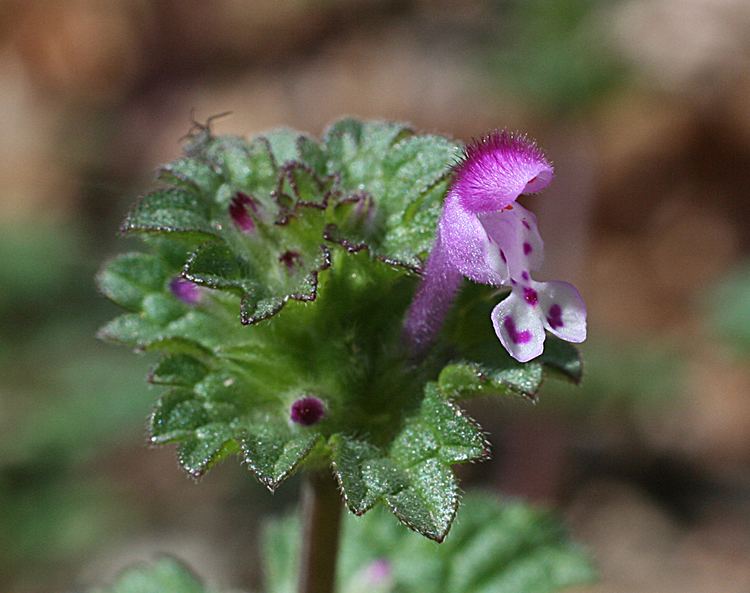
Henbit dead-nettle is an annual herb with a sprawling habit and short erect squarish, lightly hairy stems. It grows to a height of about 10 to 30 cm (4 to 12 in). The leaves are in opposite pairs, often with long internodes. The lower leaves are stalked and the upper ones stalkless, often fused, and clasping the stems. The blades are hairy and kidney-shaped, with rounded teeth. The flowers are relatively large and form a few-flowered terminal spike with axillary whorls. The calyx is regular with five lobes and closes up after flowering. The corolla is purplish-red, fused into a tube 15 to 20 mm (0.6 to 0.8 in) long. The upper lip is convex, 3 to 5 mm (0.12 to 0.20 in) long and the lower lip has three lobes, two small side ones and a larger central one 1.5 to 2.5 mm (0.06 to 0.10 in) long. There are four stamens, two long and two short. The gynoecium has two fused carpels and the fruit is a four-chambered schizocarp.
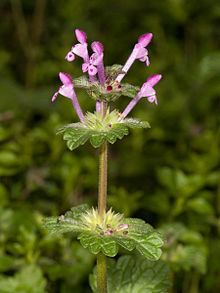
This plant flowers very early in the spring even in northern areas, and for most of the winter and the early spring in warmer locations such as the Mediterranean region. At times of year when there are not many pollinating insects, the flowers self-pollinate.
Distribution and habitat
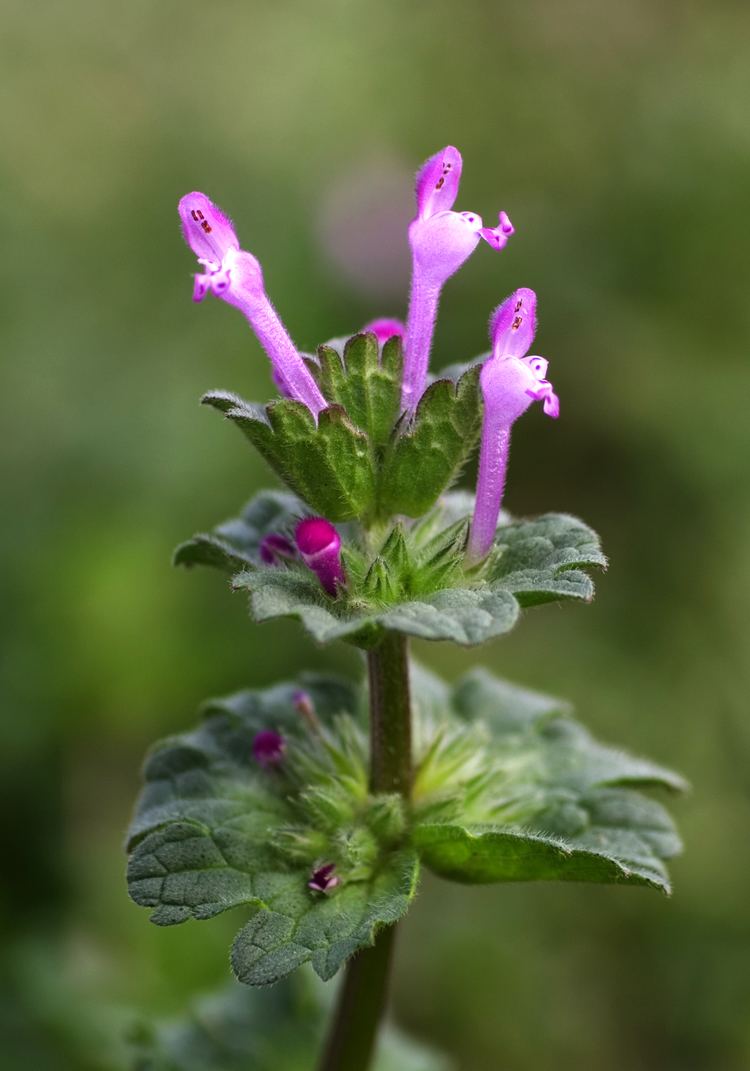
Henbit dead-nettle is probably native to the Mediterranean region but has spread around the world as an arable weed. It is found growing in bare places, gardens, fields and waste places. It propagates freely by seed and is regarded as a minor weed. Sometimes entire fields will be reddish-purple with its flowers before spring ploughing. Where common, it is an important nectar and pollen plant for bees, especially honeybees, where it helps start the spring build up.
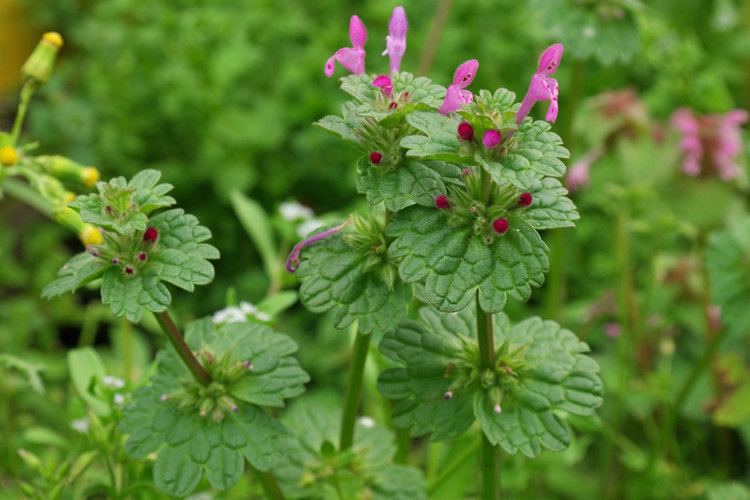
It is widely naturalised in eastern North America and elsewhere, where it is often considered to be an invasive species. However, its attractive appearance, edibility and readiness to grow in many climates often mean it is permitted to grow when other 'weeds' are not.
Uses
The leaves, stem, and flowers of the plant are edible and have a slightly sweet and peppery flavor. Henbit can be eaten raw or cooked.
